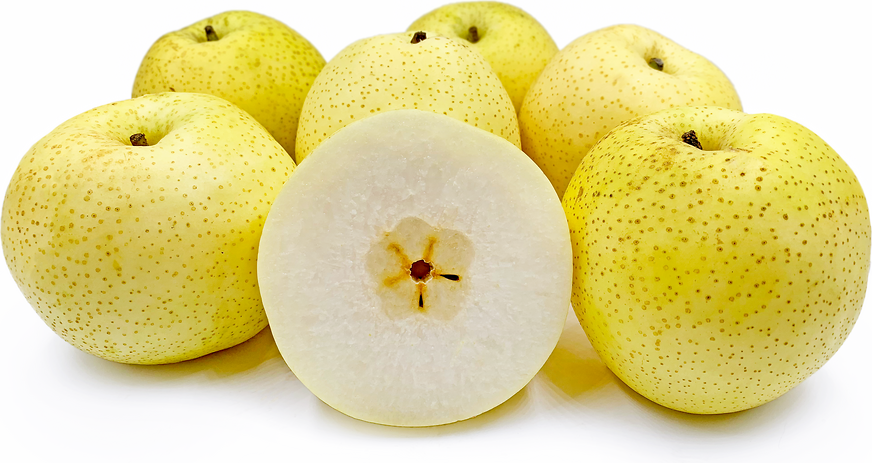


Golden Pears
Estimated Inventory, lb : 0
Description/Taste
Golden pears are very round with no discernible neck and have a golden yellow skin. The surface of the pear is smooth and dotted with small lenticels, indicative of the fruit’s high sugar content. The flesh is a nearly translucent white with a crisp texture and a small central seed cavity. Each fruit can weigh up to 1.5 pounds, or 750 grams apiece, due to the amount of water present in the flesh. Golden pears are very sweet and have little acidity.
Seasons/Availability
Golden pears are available in the late summer and into the winter months.
Current Facts
Golden pears are an Asian variety popular in Southeastern Asia and Indonesia. They are botanically classified as Pyrus pyrifolia and are commonly known as Asian or Sand pears. Golden pears are also known as Huangguan pears and Crown pears throughout China and Indonesia.
Nutritional Value
Golden pears are an excellent source of dietary fiber, vitamins B6 and C, folate, calcium and vitamin K. They have an average sugar content between 13 and 15 percent.
Applications
Golden pears are eaten fresh and are used for baking and cooking. They can be sliced, diced, or shredded for green and fruit salads or slaws, and used for crudité and fruit and cheese platters. The crisp, juicy fruits pair well with creamy or strong cheeses, gamey meats, berries, bitter greens, root vegetables, nuts and soy. They can be diced for chutney or stuffing for pork or roasted whole or braised in sweet liquids for dessert. Dice them for muffins, scones or other baked goods. They can be sliced thinly and baked with cinnamon for chips. Use Golden pears as a substitute for apples in most recipes. Golden pears will keep for up to one week at room temperature and for up to 3 months when refrigerated.
Ethnic/Cultural Info
There are over 230 different sand pear landrace varieties growing in China, where the Pyrus species originated. A landrace is one that has been geographically isolated and left to grow and adapt to its natural environment over a very long period. They are also known as local cultivars. The reason China has so many different landraces can be attributed to its diverse geography and climate.
Geography/History
Chinese Golden pears are native to east and southeastern China, where pears have been cultivated for over 3000 years. They are primarily grown in the eastern Chinese provinces of Hebei and Shandong and southwestern Jiangxi province and are exported to Europe, Southeastern Asia, Indonesia, and Australia. They are sometimes sold as in China as Hebei Crown pears or Shandong Golden pears, for the province where they were grown. They are found in markets throughout Indonesia under various brand names and can be found through online distributors.




